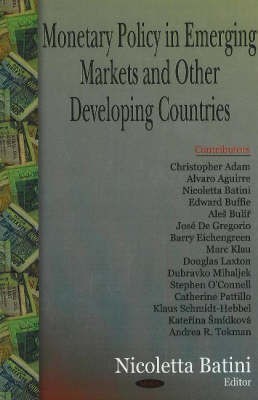Monetary Policy in Emerging Markets & Other Developing Countries(English, Hardcover, unknown)
Quick Overview
Product Price Comparison
Over the past twenty years there has been a marked shift toward more flexible exchange rate regimes and more open capital accounts by both industrial and non-industrial economies. Two decades ago exchange rate pegs of various kinds accounted for over half of industrial country monetary policy regimes, but declined to just 5 percent of regimes by 2005, while in non-industrial countries the share fell from 75 percent to 55 percent. The move toward more flexibility in exchange rates has been accompanied by the adoption of a variety of frameworks to conduct monetary policy, ranging from inflation targeting, monetary targeting, and more eclectic approaches based on several targets. In industrial countries, exchange rate pegs and monetary targets have been replaced by regimes based on implicit or explicit inflation targets. In non-industrial countries, exchange rate pegs have also often been replaced by direct inflation targets, although many non-industrial countries still operate through somewhat eclectic regimes. This book is important read for understanding monetary policy under high capital mobility based on other countries' experiences.


